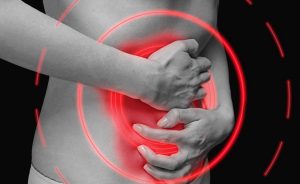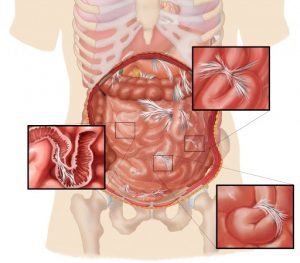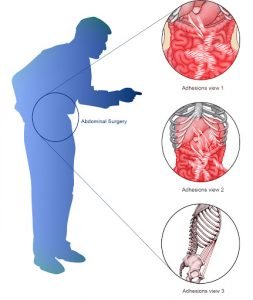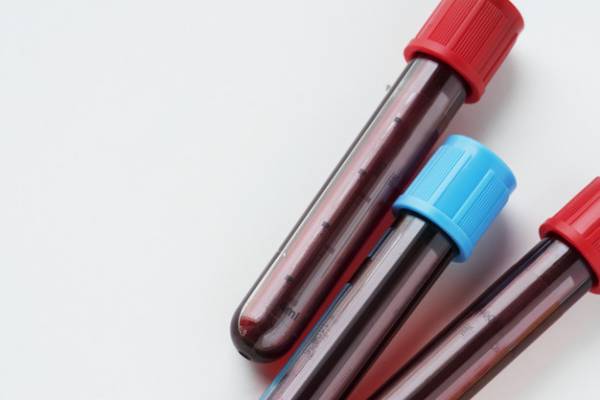Symptoms of intestinal adhesions and their treatment + video
Obstruction or intestinal adhesions of the intestine is a problem that blocks the way for food in the patient, and abdominal swelling and vomiting are common symptoms of this disease.
Watch the video:
What is intestinal obstruction or adhesion, and how is it treated?
Your intestines are about 5 to 6 meters long. This means that the food you eat takes a long time to be digested and expelled from the stomach. The intestines have wave-like movements, and the intestinal muscles’ contractions can digest food and move it forward.
Watch the video:
However, if there are problems with the muscle or nerve, bowel movements will be blocked or slowed down, resulting in traffic in the bowel. Intestinal adhesion is a medical condition caused by small bowel movements that block food.
Intestinal adhesions can cause blockages in liquids, gases, and food, and can be caused by surgery’s side effects, although there are other causes.

In general, intestinal adhesions are a severe problem. Still, people usually become aware of it late. They, therefore, continue to eat, and this causes food to accumulate and accumulate, and if this problem is not treated, it can It goes on until the intestine ruptures, eventually causing the contents of the intestine to contain bacteria that contain bacteria, so treatment should be started as soon as possible.
What are the symptoms of intestinal adhesions?
Abdominal problems can cause intestinal adhesions.
Symptoms of intestinal adhesions include:
- Abdominal contractions
- Loss of appetite
- Satiety
- Constipation
- Inability to expel gas
- Swelling of the abdomen
- Nausea
- Vomit
- Symptoms of intestinal gas, which is the most common sign of intestinal adhesions
In this case, the abdomen is full of gas and can not pass through the rectum, which will cause stiffness and swelling of the abdomen, and if you experience these symptoms, especially after surgery, you must see a doctor.
Risk factors for intestinal adhesions
Some factors can increase the risk of intestinal adhesions:
- Being old
- Digestive problems
- Electrolyte imbalance
- History of abdominal problems
- Intestinal injury
- Lose weight in a short time
- Infectious poisoning
- History of intestinal disorders, such as inflammatory bowel disease and derivatives
What causes intestinal adhesions?

Intestinal adhesions are common after surgery. People have often prescribed medications that slow their bowel movements, which can lead to intestinal paralysis. The bowel does not become blocked but does not work correctly. Eating does not make the right move to digest food. Medications that can cause intestinal paralysis to include:
- Hydromorphone
- Morphine
- Oxycodone
- Tricyclic antidepressants such as Hermit Reptiline and Imipramine
However, there are other causes for intestinal adhesions, including:
- Colon Cancer (Stomach Cancer: Everything About The Causes, Symptoms, Diagnosis And Treatment Of Gastric Cancer)
- Inflammatory bowel disease causes the intestinal walls to thicken and the immune system to become inflamed.
- Parkinson’s disease, which affects the muscles and nerves of the intestine
- Inflammation of the vagina
- Intestinal wall problems are one of the most common causes of intestinal adhesions in children.
These are the most common causes of intestinal adhesions in adolescents, and children may also experience this problem.
How is intestinal adhesion diagnosed?
The doctor first listens to your symptoms and then asks you about your medication history, examines medical conditions such as recent surgeries, and may also take a physical exam from you. Examine your abdomen and measure its firmness and swelling.
Your doctor will also listen to your bowel and stomach sounds, and if your body’s bowels do not move due to adhesions, your doctor will not hear anything or may hear extra sounds.
Imaging can make the right diagnosis in this case. The doctor also uses methods to examine the contents of the intestine, and these tests can include the following:
- X-ray films: This can show blocked and removed gases in the intestine.
- CT scan test: which can provide the doctor with more and more detailed images so that he can diagnose intestinal adhesions.
- Ultrasound: This imaging technique is common in children to detect intestinal adhesions.
What are the complications after intestinal adhesions?
Intestinal adhesions, if left untreated, can be life-threatening and cause serious problems.
Two of the most common problems after intestinal adhesions include the following:
Dead tissue
This causes tissue or cell death and can cut off blood flow to the intestines. Without blood and oxygen, the intestines cannot move their tissue and therefore die. Dead tissue occurs due to the intestinal wall’s immobility, which causes the intestinal wall to rupture easily and leak its contents.
Peritonitis

Peritonitis means a hole in the intestine, and this problem will be severe and can be caused by bacteria and fungi. Your gut contains many bacteria, and it can take a long time for harmful bacteria to build up in your gut and cause it to perforate. Bacterial peritonitis can also be life-threatening and cause organ failure.
How is intestinal adhesion treated?

Different treatments for intestinal adhesions depend on their severity. An example of these treatments has been proposed in the wet health section and includes the following:
Lateral adhesion treatment
Sometimes this condition causes only a part of the intestine to be damaged, i.e., one side of it does not move, but other parts of the intestine work as usual. In such cases, your doctor will recommend a low-fiber diet, which will reduce the amount of stool you have and make it easier to pass, although if the patient is not treated with a low-fiber diet, surgery may be needed.
Complete adhesion treatment
This type of treatment is an emergency treatment and depends on the person’s general health; for example, some people can not withstand abdominal surgery. Their body does not have enough resistance to this action. These people are usually either older or have cancer. The doctor may use alternative methods such as fatty diets, and abdominal surgery can repair the intestine’s sticky and damaged part.
Treatment of intestinal paralysis

In the case of intestinal paralysis, treatments can be done to diagnose the cause, and if the medication has caused intestinal paralysis, your doctor will try to change your medication. Although the use of a particular drug should not be stopped altogether, alternatives can be chosen.
Antidepressants can usually play a role: In the early stages of intestinal paralysis, treatment can be used without surgery. Sometimes, a person may need to stay in the hospital and be hospitalized to complete recovery. Your doctor may also use suction tubes to activate the flow of water into your bowel.
In this method, a tube is inserted into a person’s nose through the nose, and these suction tubes expel excess air. Sometimes it is possible to raise the person while working, and most problems after surgery are related to intestinal adhesions. It goes away about 2 to 4 days after surgery, although some people may need reconstructive surgery.
Perform surgery

The intestines are very long, and so you can live without a part of them.
Of course, this surgery may affect your body’s digestive processing, after which you must lead a healthy lifestyle. In surgery, the doctor has to remove the entire intestine, and in such a case, you must remove this organ. Take care empty.










